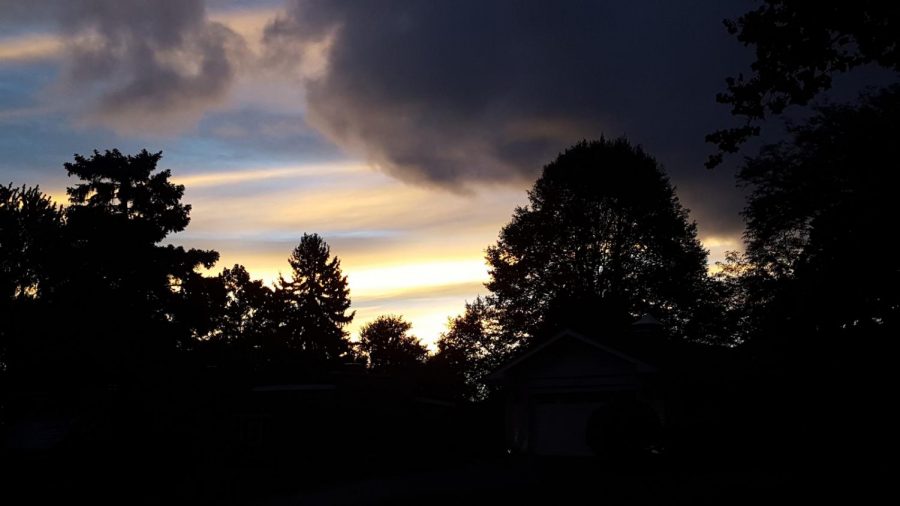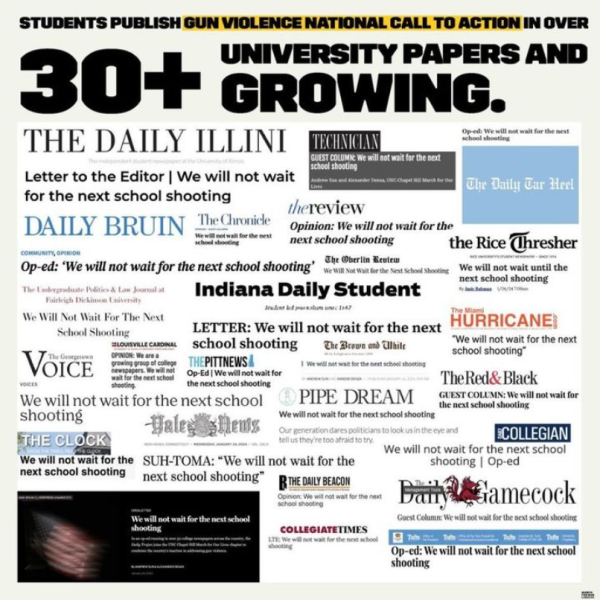October: What weather you should expect
October 17, 2018
Fall has made its return with temperatures dipping down into the 20s in spots. The National Weather Service (NWS) in Chicago had issued frost advisories and freeze warnings to account for those bone-chilling temperatures. Even though this is typical of fall and its nature (pun intended) of fast changing weather patterns, it came so suddenly. Preceding this cold spell, there were a couple of days with near record heat for October on the 8th and 9th of the month. In fact, we actually experienced temperatures from all seasons in one week according to a graphic the NWS released on October 13th!
(Photo courtesy of National Weather Service Chicago)

Now that we are into October, there are a few notable changes we will see or have already seen that don’t deserve to be gone unnoticed. These will also feature as our weather tidbits of the month, with more in-depth information. One of the more notable changes we see are fewer thunderstorms, as well as extremely lower severe weather potential. While thunderstorms can and will happen in cooler air (ie. 40s and 50s), they are less likely to form or produce severe weather because there is no warm and moist air for them to feed on.
Like humans, thunderstorms and weather systems need something to sustain themselves. For thunderstorms, it’s just a tiny bit different. Now here is the other side of the spectrum. Fall is notoriously famous for strong weather systems because of cold wintry air meeting warm moist air. Strong weather systems can produce thunderstorms in colder air because of their powerful feed of moisture rich air they bring in with their strength. It’s similar to weight-lifting. We lift heavy things to become strong, and weather systems lift warm, heavy, and moisture-rich air which makes them stronger. This air is transported past the cyclone and into the cooler air, therefore creating many thunderstorms.
This also leads us into our second change we start to see a little later on and into next month. When warm and moist air crosses too far over into the colder sector, snow can form depending on temperatures. When you have a strong low pressure system, thunderstorms can form well into the cold sector because of how fast the air is transported into the sector. If the temperatures are below freezing, as is usual with strong fall systems, a rare phenomena can form called “thundersnow.” This is when thunderstorms form in the cold sector of a low pressure weather system. Thundersnow is more likely with strong fall systems, and is typically observed in November and December. However, if conditions are right in other months of the year, thundersnow can also occur then.
Now we get to the fun part: the forecast. As is the norm, we generally have the forecast through the 25th pinned down. Through this date, the average for temperatures are in the upper 50s to near 60 degrees. The current forecast looks to be on track with below normal temperatures during this period, likely in the low to middle 50s. This also corresponds with the Climate Prediction Center’s forecast for the region. No precipitation is likely throughout this period, and if there is, it will be limited in nature. We are also tracking potentially another cold shot arriving during the period of the 19th to the 21st. This may feature high temperatures in the upper 40s and low temperatures dipping into the 20s, which may prompt more frost/freeze headlines later on. After the 25th of October, we are generally expecting more below average temperatures struggling to hit 50 degrees at times. A couple of weather systems could come through during that time, and we may have to watch for a few snowflakes, since it is late October. We don’t want to forget that the first date for a trace or more of snow on average is October 30th!





Saipranav Venkatakrishnan • Oct 22, 2018 at 2:34 pm
This is a great post. I will be sure to read the Viking Logue every week because of you!
Hannah Lin • Oct 17, 2018 at 3:52 pm
I love your work.